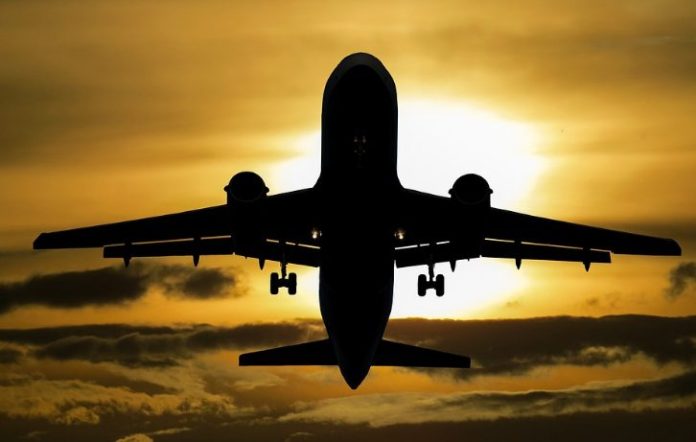The Indian skies are seemingly filled with colours of new ushering avenues as reports of record-high air travellers surfaced in the early months of this year. The future of Indian aviation looks quite illustrious as India is now the fastest-growing and third-largest aviation market in the world. Official data from the DGCA revealed a 56% increase in passenger traffic in March, doubling the number of domestic air travellers to 1.25 crore, surpassing its pre-pandemic level. At the same time, the recent news of Go First Airlines filing for insolvency might possibly push the airline to become the latest addition to the long list of airlines India has buried in its grounds.
This puts forward a big question. If Indian aviation seems to be growing then why did Go First go bankrupt? What significance does Go First’s failure hold to other airlines in the country? and above all, why do so many airlines keep failing in India?
Go First insolvency:
Go First, previously known as Go Air was founded in 2005 and commenced operations in November of the same year. The airline is a subsidiary of the larger multinational conglomerate Wadia Group which also owns other prominent brands like Brittania and Bombay Dyeing. Similar to other airlines which were launched around the same time like Spicejet and Indigo, Go Air was another example of the growing low-cost carrier presence in Indian aviation. Through its initial days, Go Air expanded gradually, negotiating talks with various parties for buying stakes in the airline. With the demise of Kingfisher Airlines in 2012, Go Air became the fifth-largest airline in India in terms of market share.
[An Airbus A320 Neo aircraft of Go First, previously known as Go Air (Image credits: Wikimedia Commons)]
However, over the years, Go Air’s growth has been relatively sluggish. The company’s market share, fleet size, and destinations served were consistently far lesser than its competitors. According to officials, the airline’s slow expansion is a part of its business strategy which aims at gaining profitability rather than capturing the market. While such a business strategy performed poorly for the airline, several other factors were involved in clipping off Go Air’s glamorous wings, many of which were also responsible for the downfall of former giants such as Jet Airways and Kingfisher Airlines.
Why do airlines keep failing in India?
- Price-sensitive market –
Most Indian air travellers are price-conscious customers. They opt for tickets with the cheapest available prices rather than focusing on the quality of the service. Thus airlines, especially low-cost carriers by default are compelled to aggressively compete to cut down ticket prices by any and every possible means. This is usually done by omitting services like inflight meals and charging additional money for extra legroom, luggage, etc.
- Unstable fuel costs –
According to reports, as much as 30-40% of the total revenue of an airline is spent on fuel costs in India. What makes it a matter of concern for airline companies is the fact that this number keeps fluctuating. Fuel costs are affected by various factors including economic policies and geopolitical trends. In India, the cost of fuel is significantly higher than in other parts of the world due to heavy tariffs imposed by the government. In recent times, the Russia-Ukraine war along with the falling value of the Indian rupee made matters worse and airlines already incurring losses had to suffer badly.
- Government Regulations –
The Indian government, apart from imposing notorious taxes on fuel prices, also implemented several policies which made it harder for airlines to expand their operations at a faster pace. This also affected international routes where competition from international carriers was striking hard. The lack of additional infrastructure for the growing passenger market also meant lesser profitability for airlines. The humongous UDAN scheme which aimed at better connectivity through regional flights did not grow as expected. More often than not, in such regional routes, planes would fly with 50% capacity which brought in additional losses for the carriers.
- The Pandemic
With the already turbulent situation, the pandemic was yet another blow vastly affecting the aviation industry as a whole. With operations suspended and flights cancelled, the longer the planes were on the ground, the more losses they brought to their respective companies. This was also the time when several airlines worldwide had to cut or completely shut down their operations partially. By the time the situation was at ease, the airlines already had huge heaps of dues to cover up.
Following the tumultuous happenings, Go Air with dreams of returning back to the skies even stronger placed orders for numerous Airbus aircraft. The airline had to shut down its international routes after the pandemic but sought to rebrand itself as ‘Go First’ and announce itself as an ultra-low-cost carrier to gain back its position in the industry. But all of these new strategies were implemented only to go in vain, as the airline incurred massive debts while its revenues were still largely lower than its pre-pandemic level.
- The Pratt and Whitney engine dispute
In the latest and final topping to Go First’s list of woes, the company ended up in a tussle with American engine manufacturer Pratt and Whitney who apparently ‘deceived’ the airline. Pratt and Whitney’s engines have reportedly been plagued by technical snags and failures which resulted in several airlines grounding their planes. The delay in delivery of engines to the already small and strained Go First fleet was not very assuring. Pratt and Whitney have had a bad name in the industry for its engine delivery for quite some time now, and Go First ended up becoming their most recent prey. By April 2023, the airline had to ground nearly 50% of its fleet of barely 59 aircraft.
With stiff competition in the Indian aviation market, high fuel costs, low revenue from passengers, more than five thousand crore rupees in debts, and only half of its fleet in the skies, Go First had no option but to resort to filing for bankruptcy. Not surprisingly, a largely similar pattern was also seen behind the fall of Jet Airways, Kingfisher Airlines, Deccan Airways, and Air Sahara to name a few of the many airlines which perished in India.
(Image credits: Jet Airways- Piaxabay; Kingfisher Airlines: Wikimedia Commons)
The success story of Indigo and Air India’s recent expansion
In such a scenario, it becomes important to analyse what makes an airline successful in India, and what better example to do so, than the low-cost giant Indigo, which has become a symbol of prosperity in the Indian skies with almost 55% of the market share in the aviation sector.
The success of Indigo can be accredited to its swift and congruous strategies. To start off, quite contrary to what was seen in the case of Go First, during its initial stage, Indigo placed an order for over a hundred aircraft from Airbus. Airbus, which was facing constraints in its sales at that time, was ready to sell its planes at a considerably discounted price. Strategic use of the sales and leaseback model and the airline’s relatively better performance on grounds of customer service bagged itself as the first choice for many travellers. With a larger fleet, Indigo could now fly to multiple destinations more frequently, thus providing cheaper tickets as the average cost of operating each flight was reduced by achieving economies of scale.
Following its recent privatization, Air India seems to be going ahead with a similar approach. The flag carrier made headlines, with its order placements for over 470 additional aircraft, the total of which could make it the single largest airline in the world in terms of fleet size. Air India has also announced its plans for a merger of its low-cost subsidiary Air India Express with Air Asia India, while Vistara and the present Air India would be combined, resulting in a single full-fledged carrier. The formula is simple, the more planes you fly as frequently as possible, the more profit you are expected to earn. Once, the airline is large enough, the net average cost for each flight automatically reduces.

Indigo has been the most profitable airline in India (Image credits: Flickr)
Looming duopoly in Indian skies
With Go First now stuck in a muddy puddle, the airline says its suspension of flights is ‘temporary’ and the company plans to return back to the skies. However, for now, situations don’t seem to be in the favour of the airline. Meanwhile, a swarm of Go First employees including pilots and crew members are rapidly taking up positions in Indigo and Air India. With practically only four major air carriers in the country (Indigo, Air India, Spicejet, and the newly launched Akasa Air), Indian skies have paved the way for even fierce competition. This is strikingly in contrast to well over a hundred airlines in the US and China. Not to forget the international carriers who are also pounding to get international passenger share in the Indian market. On the domestic front, the once colourful skies now seem to be a large looming duopoly of the hot-selling low-cost Indigo on one hand and the massive Tata-backed Air India on the other.































